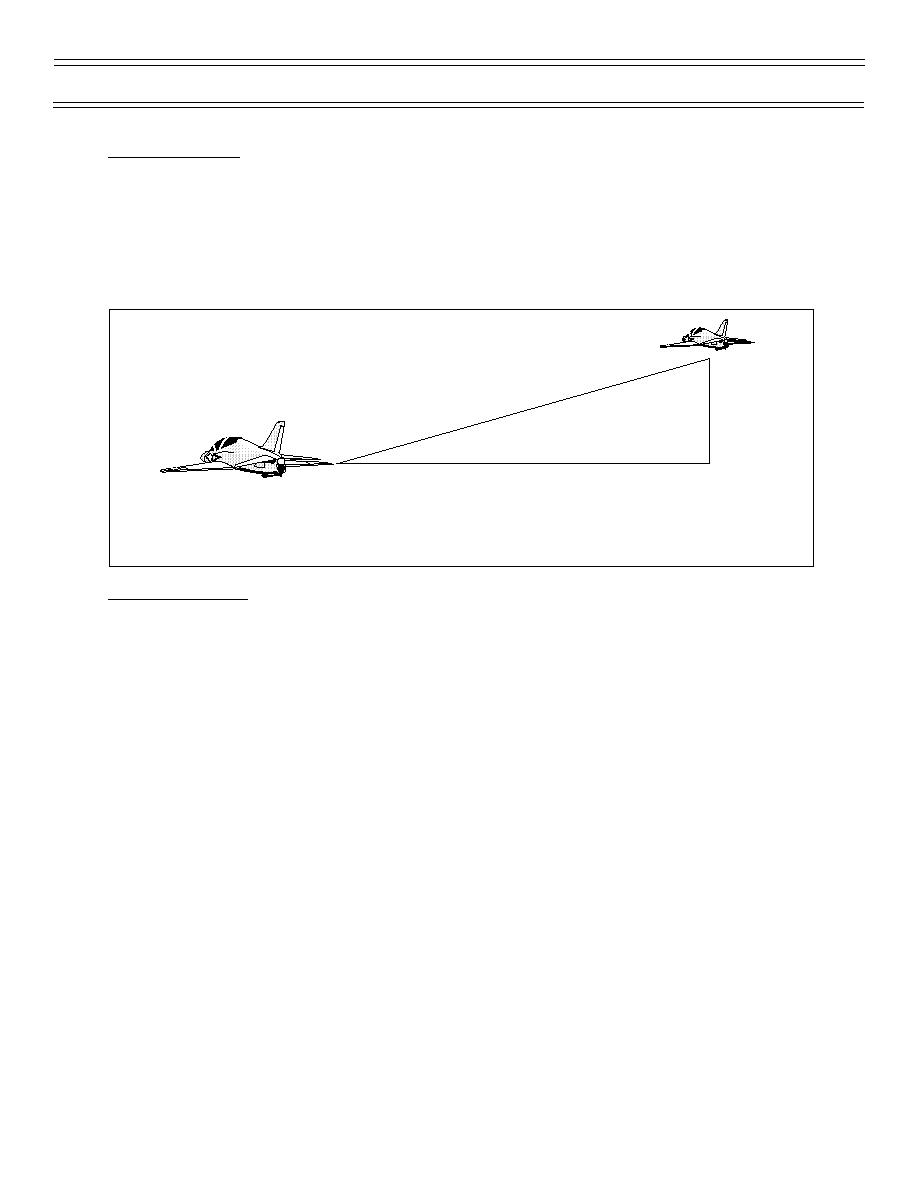
Two-Plane Road Reconnaissance
Operational Navigation
COMBAT SPREAD
With the tactical lead (TACLEAD) in level flight 300 knots, the wingman flies a position either side of
the lead, 4,000 feet abeam and stepped up 1,000 feet (Figure12). Lead's altitude is between 3,000
and 5,000 AGL. 1,000-8,000 AGL block altitude during the recce exercise, according to airspace
limitations of the local SOP and route structure apply; do not fly outside of the route as published in
FLIP AP/1B. Procedures and techniques learned in Tactical Formation apply; only the distances and
altitudes vary. Note that the abeam distance is roughly 2/3 that used in the TACF/ACM stage.
1,000'
4,000'
Figure 12: COMBAT SPREAD
RESPONSIBILITIES
When flown in the fleet, road recce involves a continual shift of responsibilities as the tactical
situation develops. Lead may locate and call the attack or the wingman may acquire the target first
and assume TACLEAD. The objective is destruction of enemy forces. However, in the Training
Command you will practice both roles. Flight lead is the TACLEAD for the first half of the route (the
lead change is determined by local SOP and will be briefed) and the wingman becomes TACLEAD
for the rest of the mission.
TACTICAL LEAD
Your responsibilities include:
1.
Navigation. Keep the flight within the route structure and maintain situational awareness at all
times. Timing between checkpoints is not critical.
2.
Locating targets. Select targets.
3.
Communications. Talk the wingman onto the target.
4.
Formation maneuvering. Maneuver the flight through the route to maintain mutual support.
WINGMAN
Your responsibilities include:
1.
Lookout. Maintain a vigilant scan. You have to keep lead in sight as well as look out for
bogeys and keep proper position. Formation. Maintain good combat spread and maneuver to
keep up your lookout and maintain mutual support.
(4-03) Original
Page 28



 Previous Page
Previous Page
